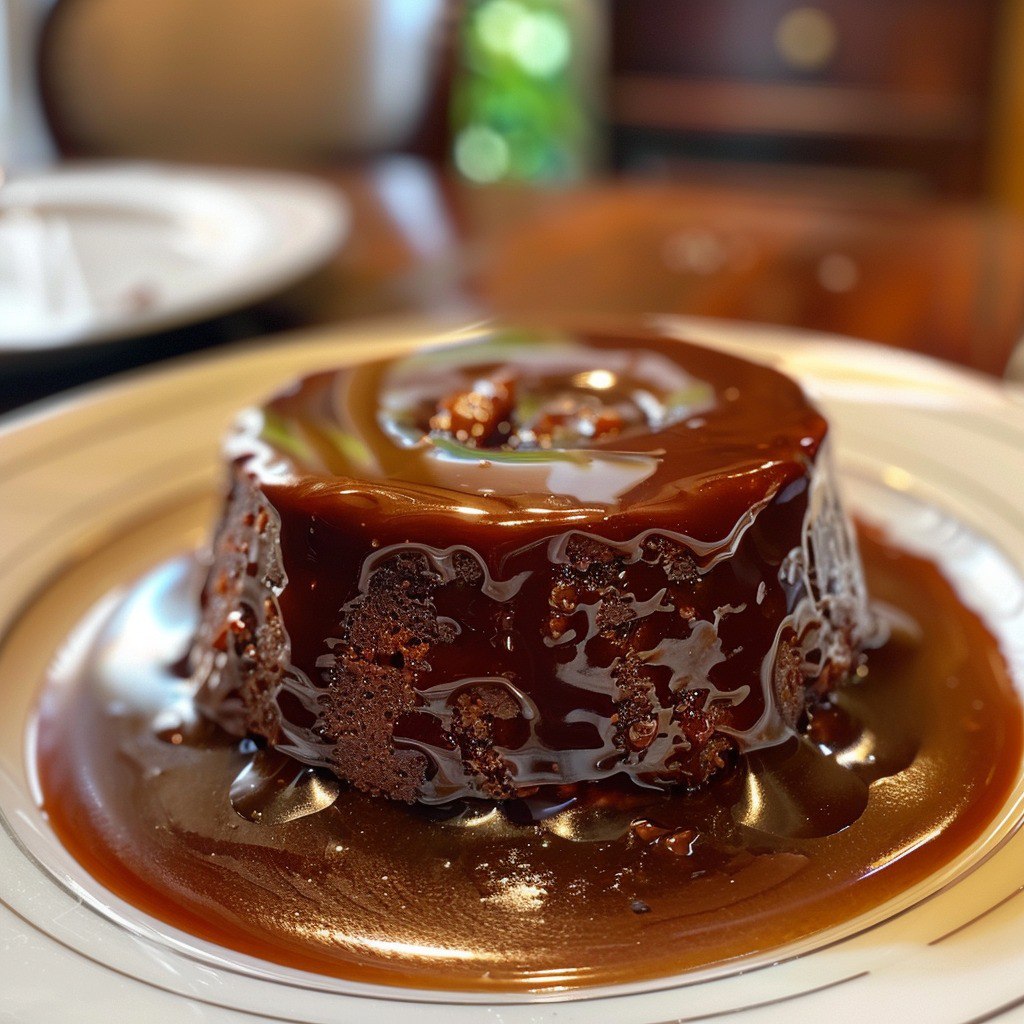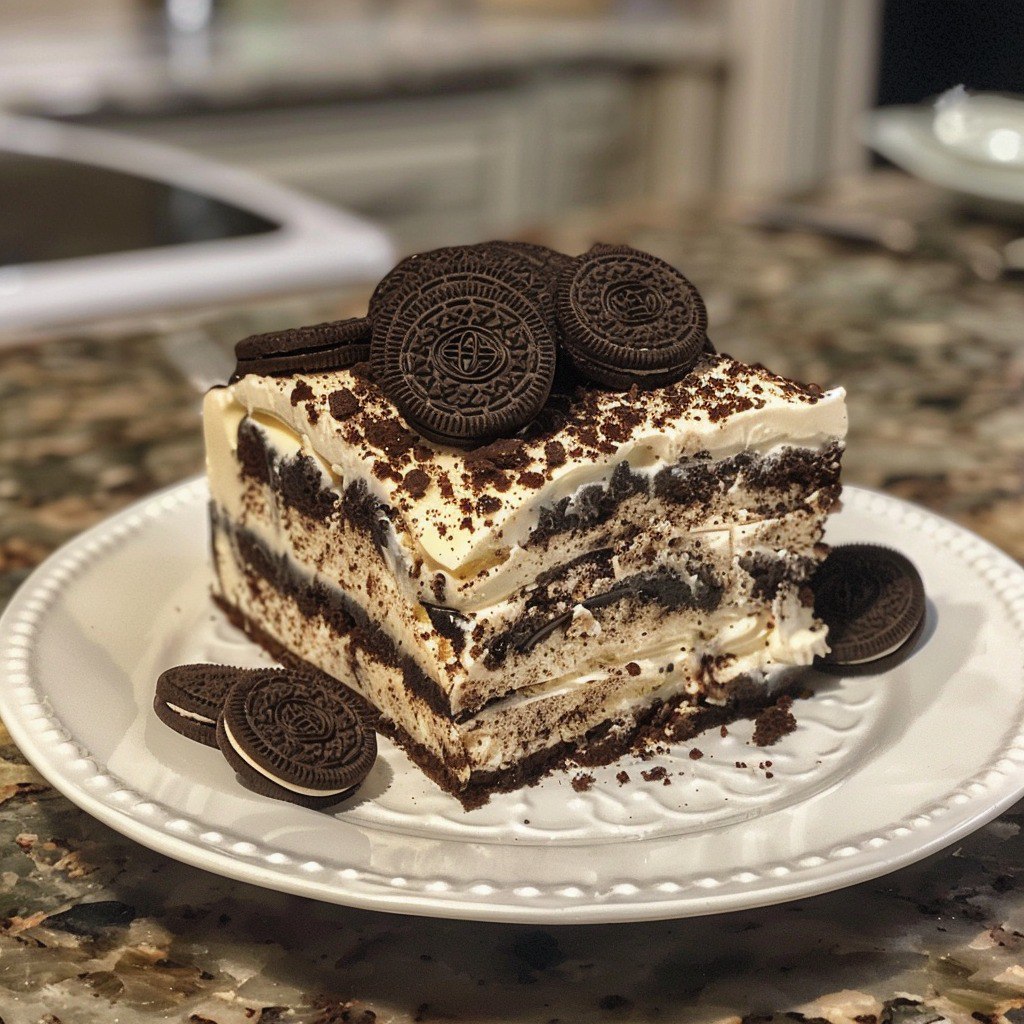Introduction
Are you tired of the same old potato salad at every gathering? Japanese potato salad offers a delightful twist on the classic dish that will revolutionize your side dish game. This creamy, flavorful creation combines Western comfort food with Japanese culinary finesse. Moreover, it’s packed with fresh vegetables and features a unique sweetness that sets it apart from traditional recipes.
Unlike American potato salad, this Asian version uses Kewpie mayonnaise for extra richness. Additionally, the texture is intentionally chunky yet creamy, creating a perfect balance. Furthermore, the subtle sweetness from rice vinegar and sugar makes this dish irresistible to both kids and adults.
Why You’ll Love This Japanese Potato Salad
Japanese potato salad has become increasingly popular worldwide, and for good reason. Here’s why this dish deserves a spot on your dinner table:
• It’s incredibly versatile: You can serve it as a side dish, sandwich filling, or even a light lunch • Perfect for meal prep: The flavors actually improve after sitting in the fridge overnight
• Kid-friendly appeal: The mild sweetness makes it appealing to picky eaters • Easy to customize: Add your favorite vegetables or proteins to make it your own • Great for gatherings: This crowd-pleaser works for potlucks, barbecues, and family dinners
Additionally, this recipe requires no special cooking skills. Even beginners can master it with ease. Furthermore, most ingredients are readily available at your local grocery store.
Essential Ingredients for Perfect Japanese Potato Salad
The secret to authentic Japanese potato salad lies in using the right ingredients. Each component plays a crucial role in creating the signature taste and texture.
Main Ingredients
Potatoes form the foundation of this dish. Russet or Yukon Gold potatoes work best because they break down slightly when cooked. This creates the perfect creamy-chunky texture that defines Japanese potato salad.
Kewpie mayonnaise is absolutely essential for authenticity. This Japanese mayonnaise has a richer, creamier texture than regular mayo. Moreover, it contains rice vinegar, which adds subtle tang. However, if you can’t find Kewpie, regular mayo works as a substitute.
Fresh Vegetables
Cucumber adds essential crunch and freshness. Furthermore, its mild flavor complements the creamy potatoes perfectly. Always slice it thinly for the best texture distribution.
Carrots provide color and slight sweetness. Additionally, they add nutritional value and appealing visual contrast. Finely chopping them ensures they distribute evenly throughout the salad.
Red onion brings a gentle bite without overwhelming the dish. Furthermore, its purple color creates beautiful visual appeal. Always chop it finely to prevent any single bite from being too strong.
Flavor Enhancers
Hard-boiled eggs add protein and richness. Moreover, they create additional texture variation. The eggs should be cooked until just set to avoid a chalky texture.
Rice vinegar provides the characteristic tang that sets this salad apart. Additionally, it helps balance the richness of the mayonnaise. Never substitute with regular white vinegar, as the flavor profile is completely different.
Sugar might seem unusual, but it’s crucial for authentic taste. Furthermore, it balances the acidity and creates the signature mild sweetness. Just a tablespoon makes all the difference.
Step-by-Step Guide to Making Japanese Potato Salad
Creating perfect Japanese potato salad requires attention to detail and proper technique. However, the process is straightforward and rewarding.
Step 1: Preparation Essentials
Start by gathering all your ingredients and tools. You’ll need a large pot for boiling, a colander for draining, and a mixing bowl. Additionally, prepare a small bowl for mixing the dressing.
Potato preparation is crucial for success. Peel your potatoes and cut them into uniform cubes, approximately 1-inch in size. Furthermore, uniform pieces ensure even cooking. Cold water prevents the potatoes from browning while you work.
Vegetable prep should happen while potatoes cook. Thinly slice the cucumber using a sharp knife or mandoline. Moreover, finely chop the carrot and red onion. Additionally, prepare your hard-boiled eggs in advance and let them cool completely.
Step 2: Cooking the Perfect Base
Boiling technique makes or breaks your Japanese potato salad. Start with cold, salted water in a large pot. Additionally, salt helps season the potatoes from within. Bring the water to a rolling boil before adding potatoes.
Cook the cubed potatoes for 10-15 minutes until fork-tender. However, avoid overcooking, which creates mushy texture. Furthermore, test doneness by piercing with a fork – it should slide in easily but meet slight resistance.
Draining properly prevents watery salad. Use a colander and let the potatoes sit for 2-3 minutes. Moreover, gentle shaking removes excess water. Additionally, letting them cool slightly makes mashing easier and safer.
Step 3: Assembly and Mixing Mastery
Mashing technique creates the signature texture. Use a potato masher or large fork to break down about 70% of the potatoes. However, leave some chunks for textural interest. Furthermore, this partial mashing is what distinguishes Japanese potato salad from smooth Western versions.
Vegetable incorporation should happen gradually. First, add the sliced cucumber and let it release some moisture. Additionally, fold in the chopped carrot and red onion gently. Moreover, the hard-boiled eggs should be added last to prevent breaking.
Dressing preparation requires careful balance. Mix Kewpie mayonnaise, rice vinegar, and sugar in a small bowl. Furthermore, season with salt and pepper to taste. Additionally, whisk until the sugar completely dissolves.
Final mixing should be done with a gentle folding motion. Moreover, this prevents the vegetables from breaking down. Additionally, taste and adjust seasoning as needed. The flavor should be creamy, slightly sweet, and well-balanced.
Pro Tips for the Best Japanese Potato Salad
Creating restaurant-quality Japanese potato salad at home requires insider knowledge. These professional tips will elevate your dish to the next level.
Temperature Control Secrets
Cooling properly affects both texture and food safety. Let the mashed potatoes cool to room temperature before adding mayonnaise. Furthermore, warm potatoes can cause the mayo to separate. Additionally, this prevents bacterial growth and ensures food safety.
Chilling time is crucial for flavor development. Refrigerate the finished salad for at least one hour before serving. Moreover, overnight chilling allows flavors to meld beautifully. Additionally, the vegetables release their juices, creating more complex flavors.
Texture Perfection Techniques
Moisture management prevents soggy salad. Salt the cucumber slices lightly and let them drain for 15 minutes. Furthermore, pat them dry with paper towels before adding to the salad. Additionally, this prevents excess liquid from diluting the dressing.
Egg handling requires special attention. Chop the hard-boiled eggs into irregular pieces rather than uniform cubes. Moreover, this creates more interesting texture variation. Additionally, add them last to prevent them from breaking apart during mixing.
Flavor Enhancement Strategies
Seasoning timing makes a significant difference. Season the potatoes while they’re still warm for better flavor absorption. Furthermore, taste and adjust the final seasoning after chilling. Additionally, flavors meld and change as the salad sits.
Ingredient quality directly impacts the final result. Use the freshest vegetables possible for best texture and flavor. Moreover, high-quality mayonnaise makes a noticeable difference. Additionally, don’t skimp on the Kewpie if you can find it.
Common Mistakes to Avoid When Making Japanese Potato Salad
Even experienced cooks can make errors when preparing Japanese potato salad. Learning from these common mistakes will ensure your success.
Overcooking Disasters
Mushy potatoes ruin the entire dish. Overcooking breaks down the starch structure too much. Furthermore, this creates an unappetizing paste-like texture. Additionally, there’s no way to fix overcooked potatoes, so timing is crucial.
Testing doneness properly prevents this problem. Pierce potatoes with a fork every few minutes after the 10-minute mark. Moreover, they should be tender but still hold their shape. Additionally, remember that they’ll continue cooking slightly from residual heat.
Moisture Problems
Watery salad is another common issue. Adding dressing to warm potatoes or wet vegetables causes this problem. Furthermore, excess moisture dilutes flavors and creates an unappetizing texture. Additionally, proper draining and cooling prevents this issue.
Vegetable preparation plays a key role in moisture control. Always pat vegetables dry after washing. Moreover, salting cucumbers and draining them removes excess water. Additionally, using a salad spinner helps remove moisture from greens if you add any.
Seasoning Errors
Under-seasoning leaves the salad bland and disappointing. Many home cooks are afraid to use enough salt and pepper. Furthermore, the large quantity of potatoes requires generous seasoning. Additionally, taste testing throughout the process ensures proper seasoning levels.
Sugar balance is often misunderstood. Some cooks omit it entirely, missing the authentic Japanese flavor profile. Moreover, others add too much, making the salad dessert-like. Additionally, start with the recommended amount and adjust gradually.
Creative Variations of Japanese Potato Salad
Japanese potato salad serves as an excellent base for creative adaptations. These variations maintain the authentic spirit while adding personal touches.
Protein Additions
Ham or bacon transforms this side dish into a hearty meal. Dice cooked ham into small pieces and fold in with the vegetables. Moreover, crispy bacon bits add smoky flavor and textural contrast. Additionally, these proteins make the salad more filling and satisfying.
Seafood options create elegant variations. Flaked crab or cooked shrimp work beautifully with the creamy base. Furthermore, these additions make the salad suitable for special occasions. Additionally, seafood pairs naturally with the Japanese flavor profile.
Vegetable Enhancements
Corn kernels add sweetness and color. Use fresh, frozen, or canned corn (drained well). Moreover, the yellow color creates beautiful visual appeal. Additionally, corn complements the existing flavors without overwhelming them.
Edamame provides protein and authentic Japanese flair. Use shelled, cooked edamame for convenience. Furthermore, these soybeans add nutritional value and interesting texture. Additionally, their green color enhances the salad’s visual appeal.
International Fusion Ideas
Korean-inspired versions might include kimchi for fermented tang. Chop the kimchi finely to distribute flavor evenly. Moreover, this addition creates a spicy-sour element that complements the creamy base. Additionally, it adds probiotics for digestive health.
Mediterranean touches could include sun-dried tomatoes or olives. These ingredients add umami depth and textural interest. Furthermore, they create a unique fusion that respects both culinary traditions. Additionally, herbs like basil or oregano work well with these additions.

Serving Suggestions for Japanese Potato Salad
Japanese potato salad pairs wonderfully with various dishes and occasions. Understanding proper serving enhances the overall dining experience.
Traditional Pairings
Japanese main dishes create authentic meal combinations. Serve alongside teriyaki chicken, grilled fish, or katsu cutlets. Moreover, the creamy salad balances the savory-sweet flavors of these proteins. Additionally, it provides cooling contrast to spicy or heavily seasoned dishes.
Bento box inclusion makes lunch more interesting. Pack the salad in a small container alongside rice and protein. Furthermore, it stays fresh for several hours without refrigeration. Additionally, it adds Western comfort to traditional Japanese lunch boxes.
Western Integration
Barbecue accompaniment works surprisingly well. The creamy, slightly sweet salad complements grilled meats perfectly. Moreover, it provides cooling relief from spicy barbecue sauces. Additionally, it’s more interesting than traditional potato or coleslaw sides.
Sandwich filling creates unique lunch options. Spread the salad on bread with lettuce and tomato. Furthermore, it works especially well in pita pockets or wraps. Additionally, the chunky texture provides satisfying substance in sandwiches.
Party and Gathering Ideas
Potluck contributions are always welcome when you bring something unique. Japanese potato salad stands out among typical potluck dishes. Moreover, it appeals to both adventurous and conservative eaters. Additionally, it’s easy to transport and serve at room temperature.
Appetizer presentation elevates casual gatherings. Serve small portions in individual cups or on crackers. Furthermore, garnish with paprika or chopped herbs for visual appeal. Additionally, this presentation makes the salad feel more elegant and special.
Storage and Make-Ahead Tips for Japanese Potato Salad
Proper storage extends the life of your Japanese potato salad while maintaining quality and safety.
Refrigeration Guidelines
Storage duration is important for food safety. Fresh Japanese potato salad keeps for 3-4 days in the refrigerator. Moreover, always store it in airtight containers to prevent flavor absorption. Additionally, never leave it at room temperature for more than 2 hours.
Container selection affects quality retention. Use glass or plastic containers with tight-fitting lids. Furthermore, shallow containers allow for more even cooling. Additionally, avoid metal containers, which can react with acidic ingredients.
Make-Ahead Strategies
Advance preparation makes entertaining easier. You can make Japanese potato salad up to 2 days ahead. Moreover, the flavors actually improve with time as ingredients meld together. Additionally, advance preparation reduces stress on party day.
Component preparation offers maximum flexibility. Cook and cool potatoes up to 2 days ahead. Furthermore, prepare vegetables and store them separately. Additionally, mix the dressing in advance and combine everything the day of serving.
Freezing Considerations
Freezing limitations are important to understand. Japanese potato salad doesn’t freeze well due to the mayonnaise and vegetables. Moreover, thawed salad becomes watery and loses its appealing texture. Additionally, the vegetables become mushy and unpalatable after freezing.
Alternative preservation methods work better for long-term storage. Consider dehydrating small portions for backpacking meals. Furthermore, canning isn’t recommended due to the mayonnaise content. Additionally, it’s best to make only what you’ll consume within a few days.
Nutritional Benefits of Japanese Potato Salad
Japanese potato salad offers several nutritional advantages when enjoyed as part of a balanced diet.
Vitamin and Mineral Content
Potatoes provide essential vitamins and minerals. They’re excellent sources of vitamin C, potassium, and vitamin B6. Moreover, they contain fiber for digestive health. Additionally, the skin (if left on) adds even more nutrients.
Vegetable additions boost the nutritional profile significantly. Carrots provide beta-carotene for eye health. Furthermore, cucumbers add hydration and additional vitamins. Additionally, onions contribute antioxidants and sulfur compounds.
Protein Contributions
Eggs supply complete protein with all essential amino acids. Moreover, they provide choline for brain health and lecithin for cell membrane function. Additionally, eggs add B vitamins and healthy fats to the dish.
Mayonnaise provides healthy fats when made with quality oils. Furthermore, these fats help absorb fat-soluble vitamins from vegetables. Additionally, moderate amounts contribute to satiety and flavor satisfaction.
Healthier Modifications
Reduced-fat versions can maintain flavor while cutting calories. Use light mayonnaise or mix regular mayo with Greek yogurt. Moreover, increase the vegetable content to boost fiber and nutrients. Additionally, add herbs for flavor without extra calories.
Allergen considerations help accommodate dietary restrictions. Egg-free mayonnaise works for those with egg allergies. Furthermore, omit eggs entirely if needed. Additionally, ensure all ingredients are gluten-free for celiac diets.
FAQs About Japanese Potato Salad
Q: How do I make Japanese potato salad healthier?
Healthier modifications are easy to implement without sacrificing flavor. Replace half the mayonnaise with plain Greek yogurt for added protein and reduced calories. Moreover, increase the vegetable content by adding bell peppers, celery, or radishes. Additionally, use sweet potatoes instead of regular potatoes for more fiber and beta-carotene.
Q: Can I make Japanese potato salad without Kewpie mayonnaise?
Regular mayonnaise works as a substitute, though the flavor will be slightly different. Add an extra teaspoon of rice vinegar to regular mayo to mimic Kewpie’s tanginess. Furthermore, a pinch of MSG can replicate the umami depth. Additionally, some cooks mix regular mayo with a small amount of Dijon mustard for complexity.
Q: Why is my Japanese potato salad watery?
Excess moisture usually comes from inadequately drained vegetables or adding dressing to warm potatoes. Salt cucumber slices and let them drain for 15 minutes before adding. Moreover, ensure potatoes are completely cool before mixing. Additionally, pat all vegetables dry with paper towels before incorporating them.
Q: How long does Japanese potato salad last in the refrigerator?
Proper storage allows Japanese potato salad to keep for 3-4 days refrigerated. Store it in airtight containers to prevent odor absorption and maintain freshness. Furthermore, never leave it at room temperature for more than 2 hours. Additionally, trust your senses – if it smells off or looks strange, discard it immediately.
Q: Can I add other vegetables to Japanese potato salad?
Vegetable additions are welcomed and encouraged for personalization. Corn, bell peppers, celery, and radishes all work well. Moreover, blanched green beans or broccoli add color and nutrition. Additionally, keep the original vegetable proportions in mind to maintain the authentic flavor balance.
Q: What’s the best type of potato for Japanese potato salad?
Russet or Yukon Gold potatoes work best due to their starch content and texture. These varieties break down slightly when cooked, creating the ideal creamy-chunky consistency. Moreover, waxy potatoes like red potatoes stay too firm and don’t mash properly. Additionally, avoid using leftover baked potatoes, as they won’t achieve the right texture.
Conclusion
Japanese potato salad represents the perfect fusion of Western comfort food and Japanese culinary sophistication. This creamy, slightly sweet side dish offers endless possibilities for customization while maintaining its authentic character. Moreover, its simple preparation method makes it accessible to cooks of all skill levels.
The key to success lies in understanding the importance of each ingredient and technique. Furthermore, proper temperature control, moisture management, and gentle mixing create the signature texture that makes this dish special. Additionally, the balance of flavors – creamy, tangy, and subtly sweet – sets it apart from any other potato salad you’ve tried.
Print
Japanese Potato Salad: The Ultimate Guide to This Creamy Asian Side Dish
- Total Time: 35 mins
Description
Enjoy a unique twist on a classic dish with this creamy and flavorful Japanese Potato Salad! Perfectly seasoned potatoes combined with crunchy vegetables and a touch of sweetness make this a delightful side dish for any meal.
Ingredients
2 lbs potatoes, peeled and cubed
1/2 cup Japanese mayonnaise (Kewpie)
1 small cucumber, thinly sliced
1 small carrot, finely chopped
1/4 cup red onion, finely chopped
2 hard-boiled eggs, chopped
1 tbsp rice vinegar
1 tbsp sugar
Salt and pepper to taste
Instructions
Boil the cubed potatoes in salted water until tender, about 10-15 minutes. Drain and let cool slightly.
In a large bowl, mash the potatoes, leaving some chunks for texture.
Add the thinly sliced cucumber, finely chopped carrot, and red onion to the bowl.
Stir in the chopped hard-boiled eggs.
In a small bowl, mix the Japanese mayonnaise, rice vinegar, sugar, salt, and pepper.
Add the mayo mixture to the potatoes and vegetables, stirring until well combined.
Chill the salad in the refrigerator for at least 1 hour before serving.
Prep Time: 20 minutes




